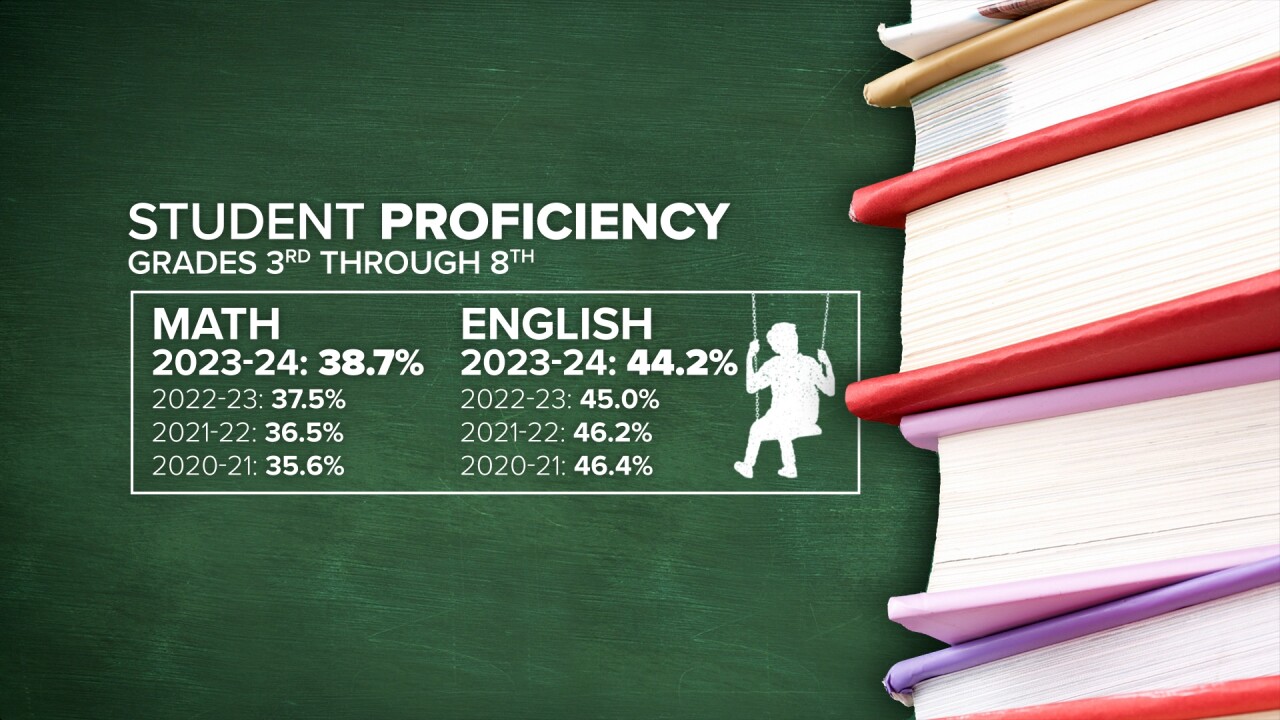HELENA — The Montana Office of Public Instruction (OPI) has released the latest rounds of student assessment data – the last round of data before a big change in the state’s testing model.
The 2023-24 assessment scores for students from third grade to eighth grade are based on the year-end Smarter Balanced test. Only a little over half of Montana students in that age group took the test last school year, as a number of school districts piloted the new MAST program — four or five short “testlets” given throughout the year, instead of a large final assessment.
All districts are implementing MAST for the 2024-25 school year.
Last year, 38.7% of students who took the Smarter Balanced assessment rated “proficient” or “advanced” in math. That number has increased each of the last three years — 35.6% in 2020-21, 36.5% in 2021-22 and 37.5% in 2022-23 – but it’s still lower than the 41.9% in 2018-19, the last year of data before the COVID-19 pandemic disrupted assessments.
For English and language arts, 44.2% of students were at least proficient last year, down from 45% in 2022-23, 46.2% in 2021-22 and 46.4% in 2020-21. In 2018-19, 50% of students were proficient or advanced.

State Superintendent of Public Instruction Elsie Arntzen says the aggregate numbers may not be giving the full picture.
“There are multiple stories with just a single number, let's put it that way,” she said.
Arntzen said her office is more focused on “cohort numbers” — tracking how proficient the same group of students has been each consecutive year. For example, students who completed eighth grade last year were third graders in 2018-19.
OPI’s data shows the number of students rated proficient or above in reading fell from 48.4% when they were in third grade to 42.9% when they were in eighth grade. In math, those numbers fell even further, from 48.6% to 33.7%.
“We've got a trend of data that has come since we've had the disruption of learning – the disruption of learning was COVID,” said Arntzen. “We all remember that something was lost during that period of time.”
Arntzen has long argued that year-end tests aren’t the best way to measure students’ proficiency, and her office has touted MAST as a way to get a better view of their learning, while allowing teachers to make adjustments sooner.
“If the federal government demands that we have an assessment tool, should it not also be one that Montana teachers can also use as a way of enhancing their teaching?” she asked?
For now, MAST covers only math and English, but the U.S. Department of Education has awarded the state a grant of nearly $4 million to develop science assessments for sixth grade through eighth grade.
“One more time, I'm grateful for the federal government to allow Montana to be innovative,” Arntzen said.
Arntzen says there are more positive signs in the assessment results for older students.
Among eleventh grade students taking the ACT, 52.5% were proficient in English — down slightly from 53.4% in 2022-23 but up significantly compared to 42.1% in 2021-22. In math, 30.7% of students were proficient – up from 30.6% in 2022-23 and 25.3% in 2021-22.
Arntzen says that could be a sign that students who were older when COVID-19 happened are having an easier time rebounding.
“Normally you have a learning curve that goes uphill, but that's not what has happened in our earlier grades,” she said.
Assessment results for individual schools and districts are now available on OPI’s website, through the GEMS tool.



